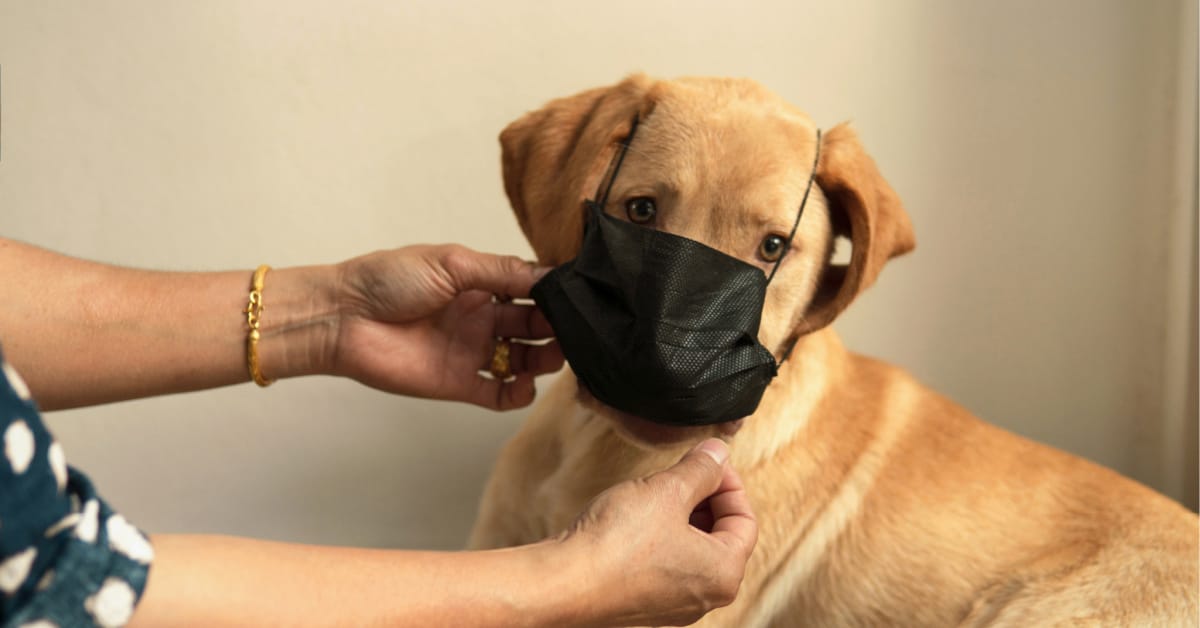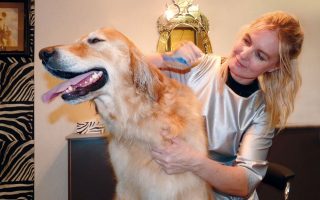Labrador Retrievers may have some health issues as they grow older, but the breed is generally healthy. Once in a while, however, Labrador allergies may come in and become part of the conversation.
Labrador allergies are quite difficult to diagnose, as they may be due to a host of reasons.
For Labrador Retrievers, unlike most humans, allergies do not come in the form of sneezing as a reaction to allergens.
Instead, their skin acts up, and you may notice them scratching certain parts of their body on a consistent basis.
The formal term for skin allergies in dogs is canine atopic dermatitis. However, we will not be limiting the allergies we will discuss below to canine atopic dermatitis. We will talk about other types of allergies as well.
This is vital because according to this study, Labradors are one of the dog breeds that genetically predisposed to getting allergies.
Consequently, it is important for you to be aware of Labrador Retriever allergies and what you can do to help.
The rest of this article will talk about the different kinds of Labrador allergies, the common allergens, and what to do when you suspect that your Lab has allergies.
Types of Labrador Retriever allergies
1) Food allergens
First off, let’s discuss food. Food is one of the most important parts of any living being’s life.
Just like in the case of humans, food sustains your Lab and gives them nourishment.
One thing you have to know, however, is that food is not the biggest contributor to allergies in dogs. In fact, it sums up to only about 10% of the reasons why Labradors get allergies.
Some of the most common food allergens are rice, wheat, corn, soy, beef, and eggs.
Part of the reason why diagnosing allergies can be difficult is that they could result from a ton of reasons.
Diagnosing allergies takes time and effort and can be a lengthy process in most situations.
Each mode of diagnosis for skin allergies in Labrador Retriever will be different in each scenario, and we will discuss them later in this article.
2) Flea allergies

A flea allergy is also referred to as flea allergy dermatitis. Take note that this is not exactly the same with a flea infestation.
In a flea infestation, there is an increased number of fleas present in the Lab’s body. On the other hand, in a flea allergy, this is not necessarily the case.
Flea allergies are one of the most common reasons for allergies. When treating canine atopic dermatitis, a flea allergy or a flea infestation is often ruled out.
The affected areas in a flea allergy are usually the neck, the area near the tail, and the crotch area.
So, if you notice that your dog is scratching themselves in these areas, it may be due to a flea allergy.
However, that does not automatically mean that your Labrador is free from atopic dermatitis.
There are some situations where dogs have both flea allergy dermatitis and canine atopic dermatitis. When this occurs, it makes the diagnosing process much more complicated.
To add to that, climate and season also play a role in flea allergies. Your dog’s flea allergy may spike up in the warmer months (and even all year round) if you live in a humid and warm climate.
Even if your location does not have any fleas, previous travels could also be a culprit behind why your Labrador Retriever is suffering from allergies.
3) Contact allergies
Another reason why your Lab may have skin allergies is due to contact with substances that they are allergic to.
It can be difficult to identify these substances, as your Lab probably comes in contact with many substances daily.
However, you can start tracing back and figuring out if your Labrador has had any recent contact with irritants.
These may come in the form of the sprays and aerosols that you use around the house, the plants that your Lab may come in contact with, and basically any other item that may induce an allergy in them.
The allergies will be most prevalent in areas where there is little to no hair.
For instance, the back of the paws and the abdomen are common areas of allergy manifestation. The ears and at the inner part of their shoulders are also susceptible areas.
4) Inhaled allergens
Allergens that your Lab may get from the air that they breathe is another common reason that your canine gets allergies. They could breathe in pollen or dust from their surroundings.
Additionally, the season and the time of the year also exacerbate these allergens.
For example, spring and summer is a common time to get allergies considering all the pollen that is in circulation.
You may benefit from taking this into consideration when figuring out the reason for your Lab’s allergy.
You will notice your Labrador Retriever itching and scratching constantly when this happens.
Watch out for unusual scratching behaviors, as this could indicate allergies. Being able to catch these behaviors the soonest time possible will also make it easier for you to find out the reason for the allergy.
What to do when your Labrador Retriever has allergies
You will not be able to diagnose the allergy by yourself if it is something new that your Labrador has not yet experienced.
Hence, we suggest that you consult with a medical professional so that you can test your lab for allergies.
In determining a diagnosis, there are certain steps that any medical professional will go through.
Based on this study, for example, we have a few of the recommended guidelines for diagnosing canine atopic dermatitis:
1) Rule out fleas.
Before proceeding to the other elimination terms, fleas have to be ruled out first.
A flea allergy is different from a skin allergy, so it is important to make the distinction between the two.
Of course, if there are fleas, and it seems like they are the reason for the allergy, then the diagnosis will go in a different direction.
2) Consider the possibility of other ectoparasites.
Parasites could also be the reason why Lab is itching in certain areas.
It is important to rule this out because treatment is completely different from the treatment for treating allergies.
To determine this, samples obtains through skin scraping, hair plucking, hair combing, and others.
These samples then run through a microscopic examination to determine if ectoparasites are the reason for the lesions and the itchiness.
3) Consider the possibility of infection.
There are also certain infections that show up with the same symptoms as allergies. One such example is infection resulting from the Staphylococcus pseudintermedius.
This manifestation is usually a secondary result of atopic dermatitis. Making sure that it is not the primary source of itching and lesions is necessary to proceed.
4) Consider food reactions.
As previously stated, food is only a small chunk of why dogs get allergies. Moreover, there are way too many possibilities when it comes to food.
Still, ruling out food as the cause for the allergy is a step in determining a diagnosis for your Labrador’s allergies.
The elimination done through elimination diet trials since accurate commercial diagnostic tests are not available. This is for dogs who show symptoms all year round.
The diet trial is usually filled with food products that the dog being tested has not yet tried out before.
This poses a problem since many commercial dog food options usually filled with many different types of ingredients.
In effect, this can also make the overall process of selecting a diet much more difficult.
Once there is already a clinical diagnosis of atopic dermatitis, allergy testing comes into the picture.
Allergy testing is not always necessary. However, many factors considered when it comes to determining the importance of doing allergy testing.
For example, if the manifestation of symptoms is severe or well-managed, allergy testing might be necessary. Currently, this is done through intradermal skin testing (IDT) and allergen-specific IgE serology (ASIS).
The main purpose of these options is to confirm the clinical diagnosis of canine atopic dermatitis.
The preferred mode of testing is IDT. However, ASIS also has significant pros since your Lab will not have to be sedated during the process. Furthermore, it is more convenient.
The testing will also allow the determination of the offending allergen so that a specialized mode of treatment can be administered.
Conclusion
As you can see, testing for allergies is a lengthy process that is not to be taken lightly.
Diagnosing allergies and determining the offending allergen can take a lot of time and will require tons of patience.
But, it will make your Lab’s life much better. Once the offending allergen is determined, it will be much easier to proceed with the right treatment that will make your dog more comfortable.
If you do notice signs of allergies in your dog, you should consult a vet for their opinion.
Since Labradors are predisposed to allergies, you many need to step up and watch out for it to catch it as soon as you can.







